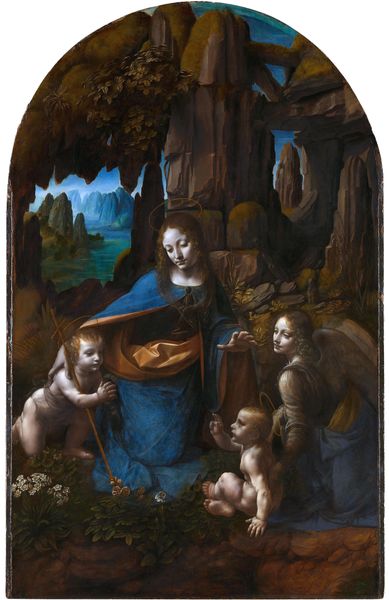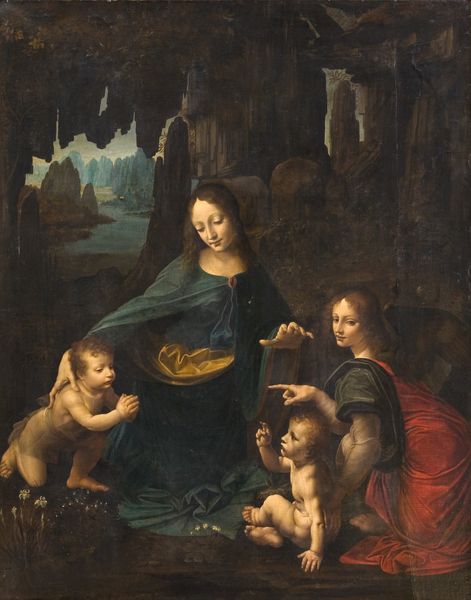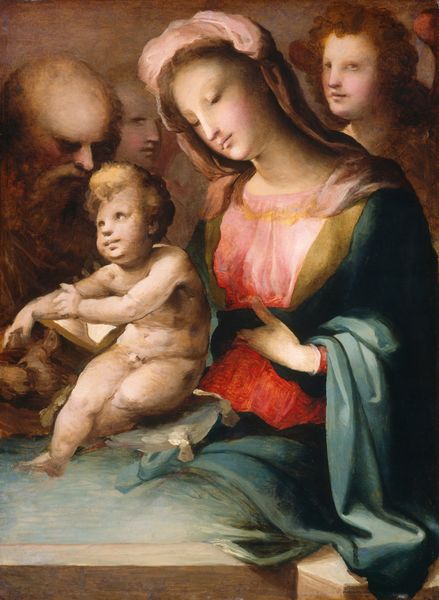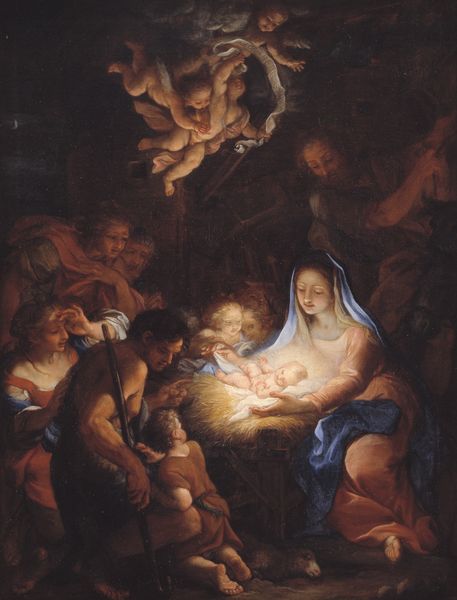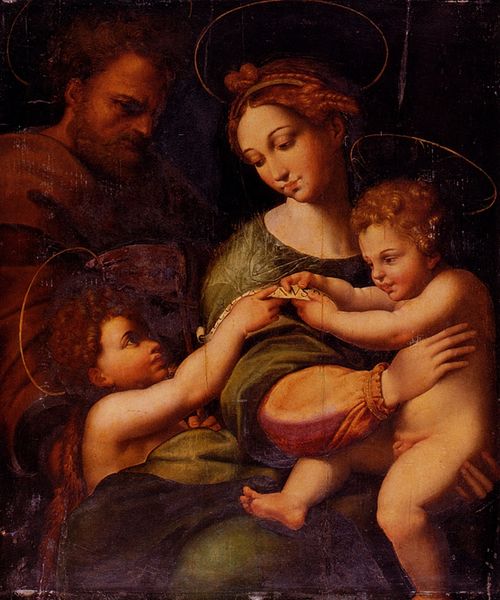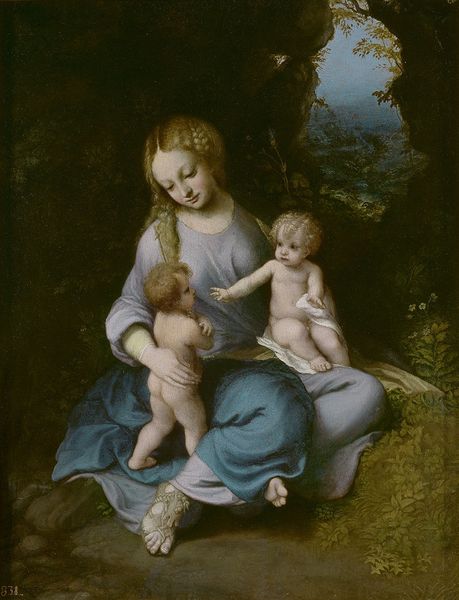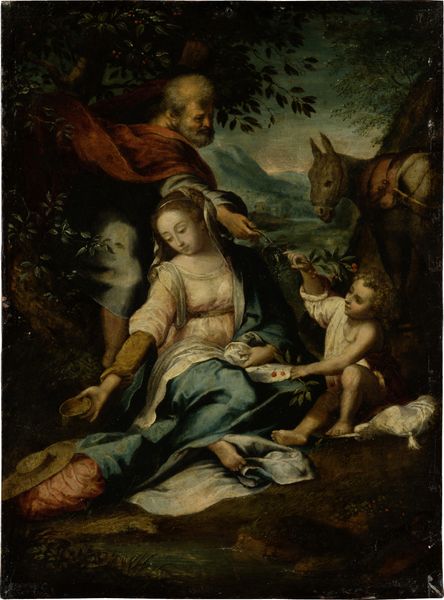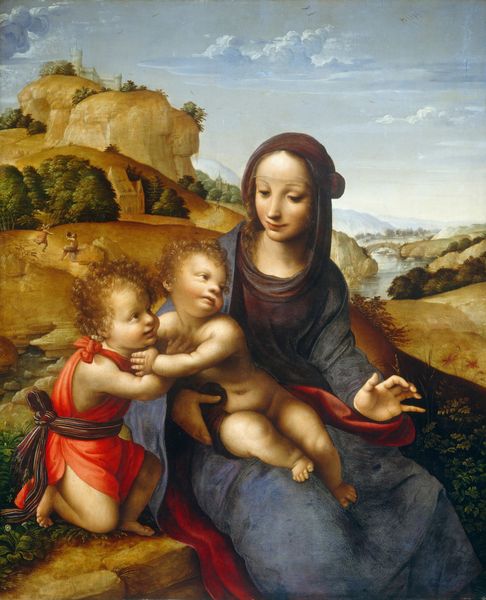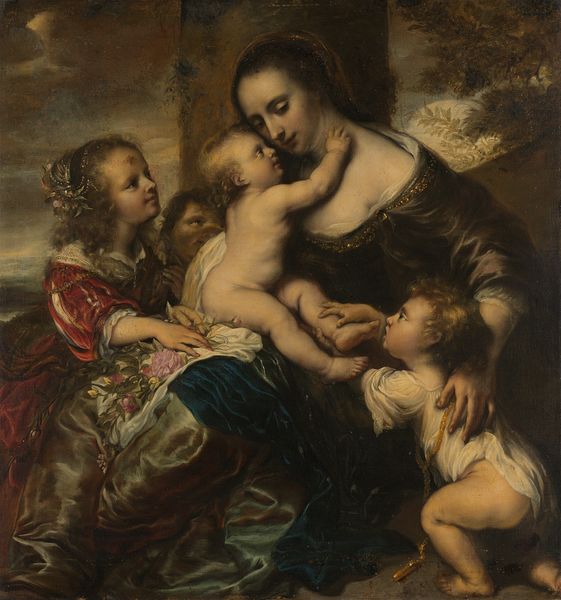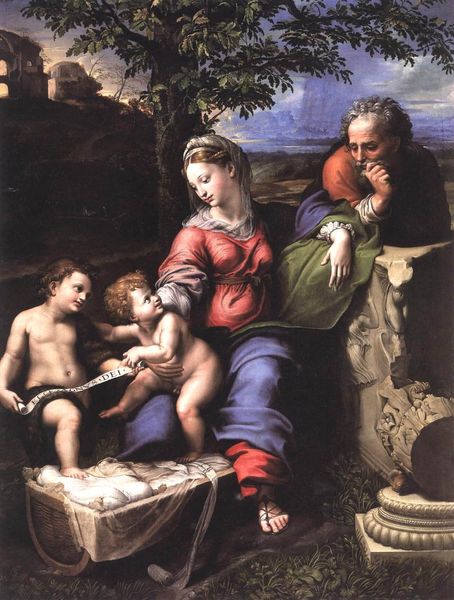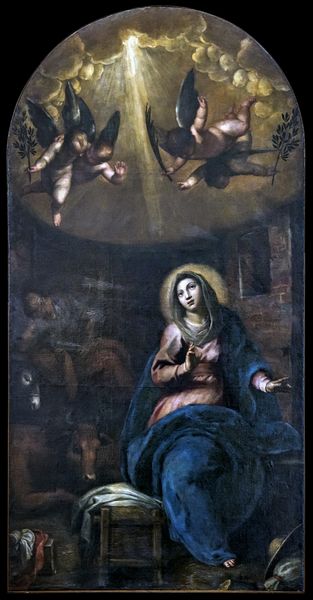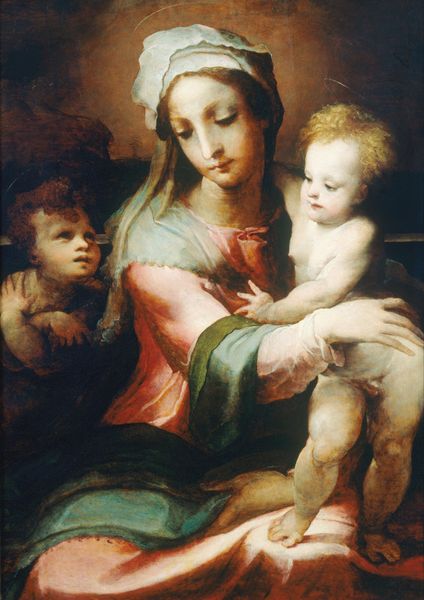
painting, oil-paint
#
high-renaissance
#
painting
#
oil-paint
#
landscape
#
figuration
#
oil painting
#
christianity
#
italian-renaissance
#
virgin-mary
#
angel
Dimensions: 122 x 199 cm
Copyright: Public domain
Curator: As we observe Leonardo da Vinci's oil on panel painting, “The Virgin of the Rocks”, painted around 1486 and housed here at the Louvre, what is your initial impression? Editor: The shadowed grotto is arresting, almost womb-like. The figures emerge softly, created by a master of chiaroscuro who pulls the scene towards us, into this shared space. The blues, greens, and browns coalesce into a serene vision, as if lit by divine luminescence. Curator: Indeed, Leonardo presents us with an intimate tableau steeped in symbolism. The Virgin Mary, an angel, the infant John the Baptist, and Christ child find shelter in this rocky space. I find myself wondering about the socio-political resonances of depicting sacred figures not in a grand cathedral but within this earthbound setting. Do you sense a connection to the changing roles of women or marginalized populations? Editor: The cavern’s depth certainly speaks to me of both intimacy and a type of unveiling—but more as a demonstration of sfumato than any feminist ideals. Consider how Leonardo employed soft gradations, that hazy blurriness that he considered the highest peak of painting. I feel it invites a specific contemplative viewing. Curator: Of course, his mastery of sfumato, but that does not negate the potent placement of the divine in liminal spaces. Da Vinci, positioned these holy characters within a locale, symbolizing refuge for the downtrodden. We see his response to social inequalities, perhaps, by creating a space for divine figures to encounter a population removed from social strictures. Editor: But how do you feel about his formal compositional techniques? The pyramidal arrangement—Mary at the apex—draws our eyes through a planned topography of forms. Also consider the way that each figure’s gesture seems related. How do you see their positions informing your theory of gender, identity, race and politics? Curator: I find the painting a complex engagement of all the elements: formal artistic conventions acting as a carrier for deeply sensitive political engagements, it allows the viewer a layered encounter. It makes a compelling case for the need to appreciate artworks by seeing the intersection of beauty and activism. Editor: I concede, but to fully unpack this, viewers should reflect more on the formal relationships and how da Vinci has brought together artistic ideas to engage audiences across the ages.
Comments
No comments
Be the first to comment and join the conversation on the ultimate creative platform.
